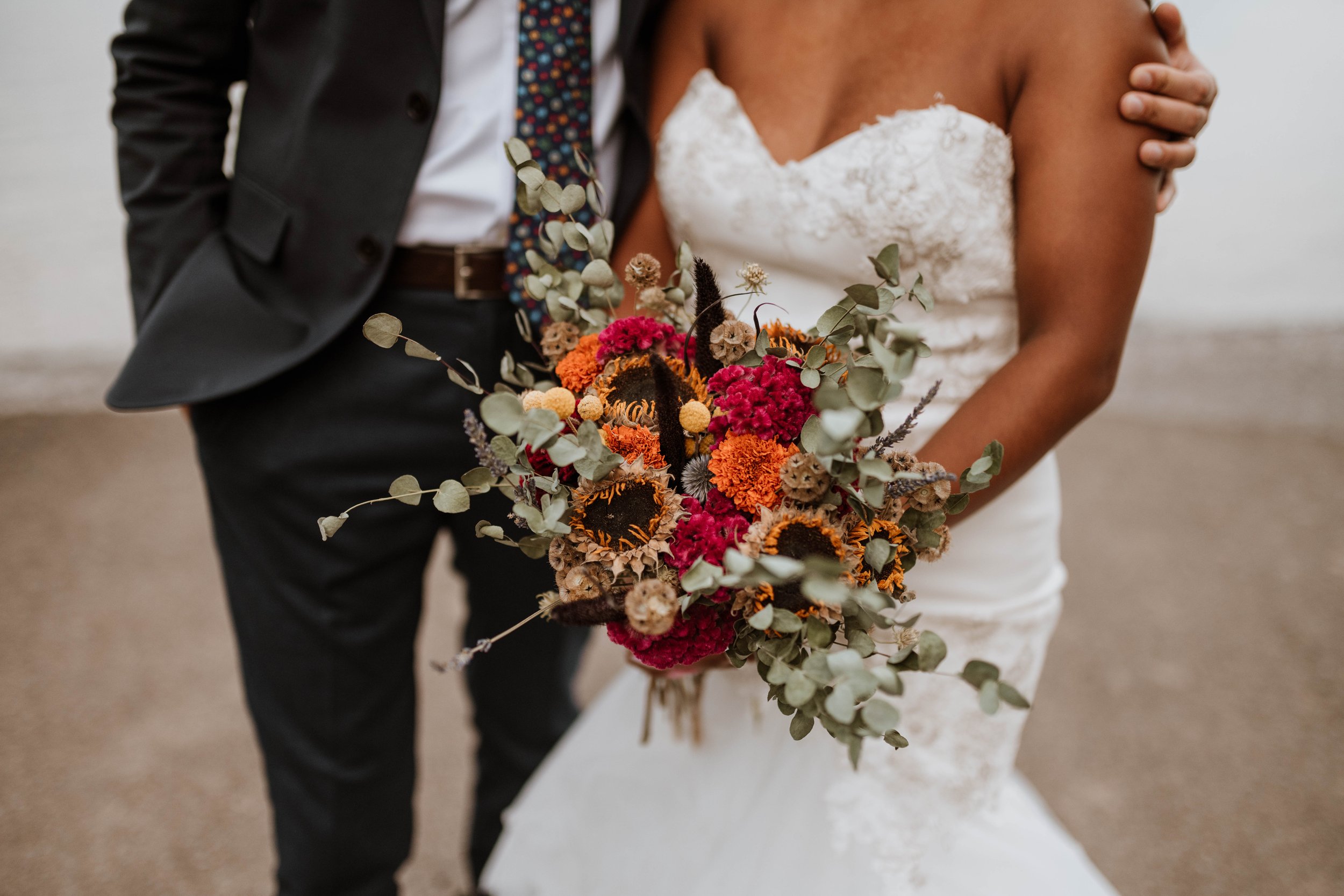Opting to have a more eco-friendly wedding is never a bad thing. We always want to try and reduce our carbon footprint and produced garbage, especially when hosting larger gatherings such as a wedding. Here are a few simple ways that you can implement into your own celebration to have an eco-friendly wedding.
With people becoming more conscious of the waste they produce, you may find it shocking to learn exactly how much waste a wedding can produce. Green Bride Guide asserts that the average wedding produces roughly 400lbs of garbage and 63 tons of CO2. With 2022 statistics showing that there’s going to be 2.5 million weddings next year…that’s roughly 1 billion lbs of trash alone. Gross.
You absolutely don’t have to go to the extreme to make your wedding 100% ethical, eco-friendly, and zero-waste (but if you do, I’m living for it) but if you’d like to throw a more sustainable celebration, I’ve provided a few tips and ideas that will hopefully inspire you during your wedding planning process.
Florals
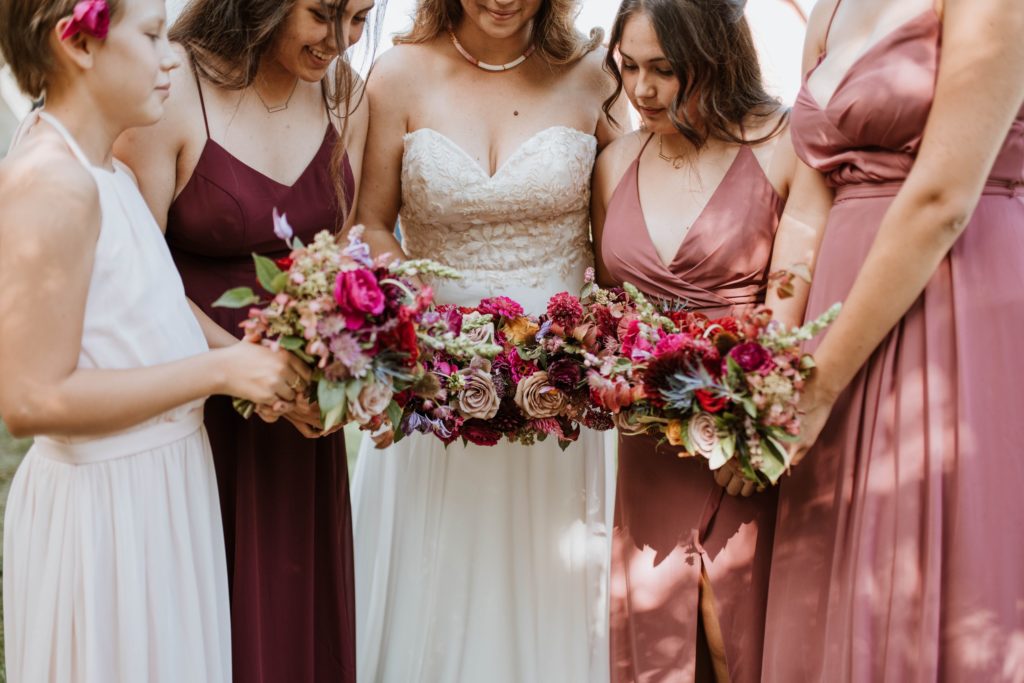
Go foam free in your floral design.
Recently, florists have moved away from using foam in their floral designs, which is awesome. While foam free designs are growing in popularity, it takes serious skill and time to construct the beautiful pieces you see, so expect a slightly higher price tag for these foamless pieces of art. If you’re not sure whether your florist does foam free work, definitely make sure to ask!
Choose seasonal blooms, grown locally.
If you do decide to use cut blooms, choose seasonal blooms that are grown locally. Finding a florist that is locally sourced or grown locally reduces the need to transport blooms long distances. Not only are you helping a small, locally owned business when you do this, but you’re also helping reduce emissions by lowering the demand for flowers grown elsewhere and then transported.
Get creative.
Your centerpieces (or bouquet for that matter) don’t have to be elaborate cut blooms! I’ve shot weddings where the bride and bridesmaids all carried gorgeous green bouquets filled with grasses, herbs, and ivies. I’ve also seen centerpieces that reuse the bridesmaids’ bouquets, or that are constructed out of locally grown fruits and potted plants.
Venue
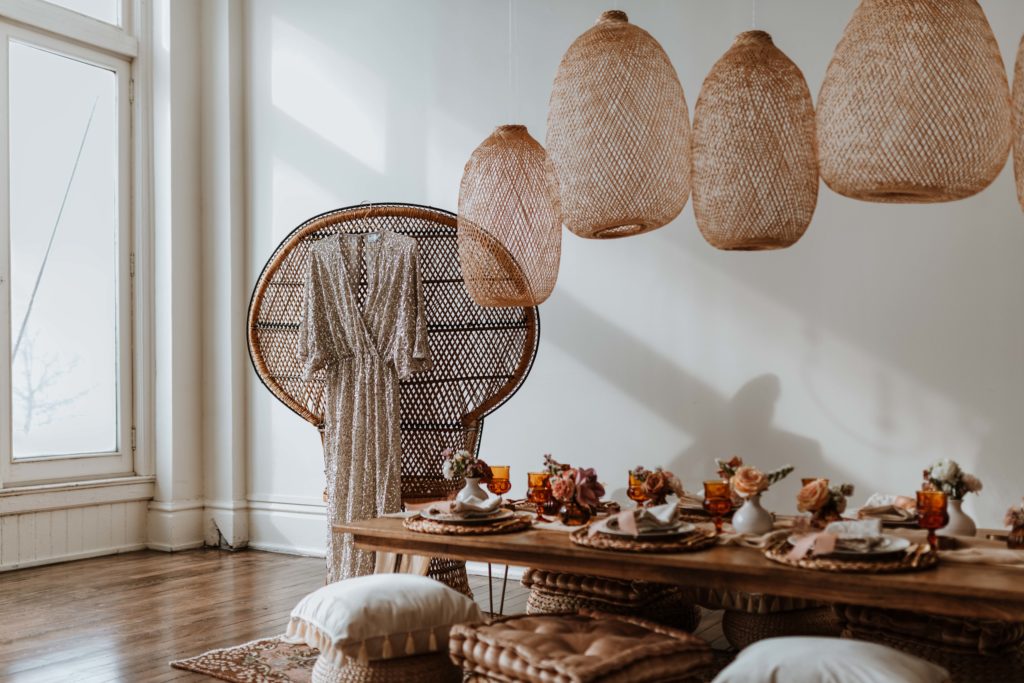
Pick an Eco-Friendly Venue.
This is probably the easiest way to have an eco-conscious wedding and shrink your celebration’s carbon footprint. Opt for a ceremony and reception site that takes sustainability seriously and where you can have your ceremony and reception – reducing the need for travel between locations.
Look for built-in, or naturally occurring décor.
While booking your ceremony and reception sites, look for spaces that offers the details that fit your wedding style. If the venue has a small collection of furniture pieces that you love and can use, this is even better. This helps reduce the need of bringing in additional décor which not only saves you cash, but also resources for the earth. Tip: Greenhouses are an amazing option!
Marry in nature.
Going for an outdoor space is one of my favorite options. It’s a fantastic way to be one with nature on your wedding day: a exciting mountain summit, rolling hills, or vibrant garden are all stunning locations to exchange your vows. Booking a wedding at a National Park helps provide funding for its continued conservation, and many beach fees include proceeds for cleanup efforts. Not to mention all the gorgeous natural lighting.
Décor
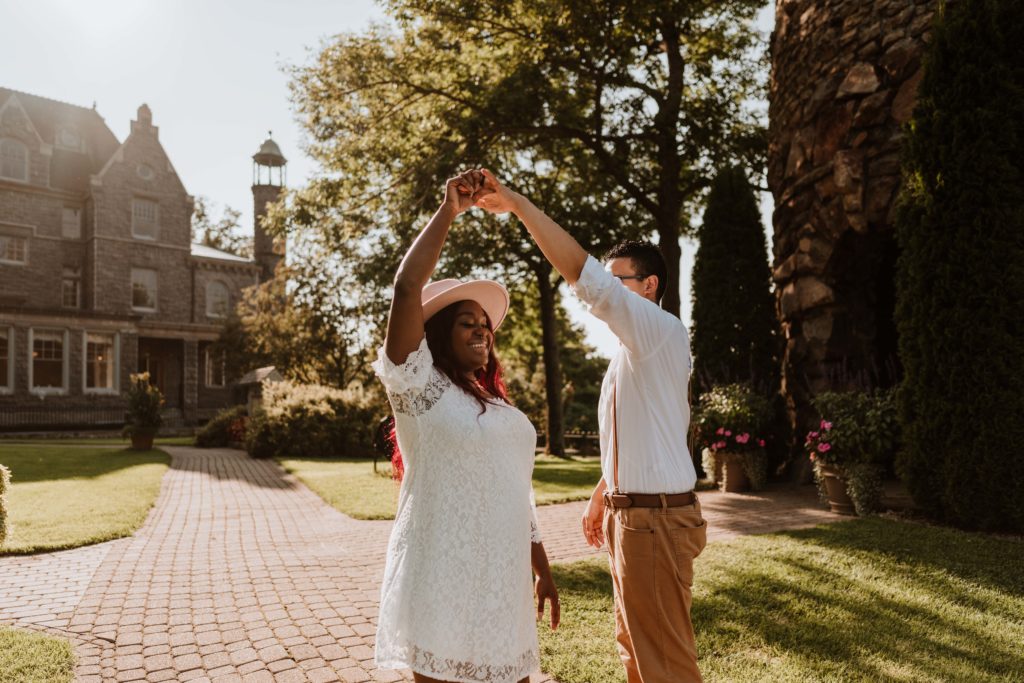
Donate your décor.
Please, don’t just trash it. For pieces like lanterns, mirrors, candles and signage, if you’re able, find a way to incorporate (at least) some of your wedding décor into your home. If you’re not able to, or you have excess pieces, donate them to a local thrift store! I also strongly suggest finding a local thrift shop that works with local populations (like the Urban Mission in Watertown, NY). Flowers are a big one, too. There are organizations that will pick up your arrangements and donate them to local hospitals, senior centers, and homeless shelters. You can also gift your extras to your vendors, venue staff, family, or guests.
Reduce Food Waste
Consider donating your leftovers.
If you’re doing a buffet-style dinner, the amount of leftovers is almost surreal. Typically, the leftovers after the dinner are boxed up and then trashed. Speak to your caterer about saving leftovers. Consider reaching out to a soup kitchen, homeless center, victim’s assistance or children’s home to donate your leftovers. Last year, I shot a wedding that was heavily impacted by the pandemic and the guest list shrunk from 150 to 10, and the couple (who had already paid for their plated reception dinners) donated them to the local hospital for the frontline and support staff to enjoy versus tossing the plates, or losing the money.
Plated dinners
Plated dinners reduce food waste as they aren’t as likely to result in excess food because the caterer is able to regulate and predict the amount of food being served. This option also allows for everyone to eat at basically the same time.
Let the spirits flow.
Single use bottles contribute to a significant amount of waste that can ultimately end up in a landfill. The same can be said for your typical consumer sized bottle of wine when at a wedding. When selecting wines and spirits for your celebration, ask about magnum sized bottles, or even a wine cask (if your gathering is large enough). This will help immensely.
Rent When You Can
Rent your décor and equipment.
Forget plastic glasses, opt for rented place settings. This alone can upgrade your entire wedding look. Same for linens. Instead of paper napkins, rent linen napkins, tablecloths, and runners. Some venues even provide linens as a part of the space cost. If you’re going for straws, rent or buy reusable ones that guests can then take home. Or, for a less expensive option, go for paper straws over plastic as they decompose more quickly and easily.
Exit Toss Alternatives
Consider a plant-based approach.
Throwing rice, or confetti around isn’t the most environmentally conscious way for guests to celebrate your union. One alternative that I am particularly fond of is the plant-based approach where guests toss lavender, rose petals, fresh herbs, or a micro mix of local wildflowers. All of these are biodegradable and provide amazing pops of color for that exit scene.
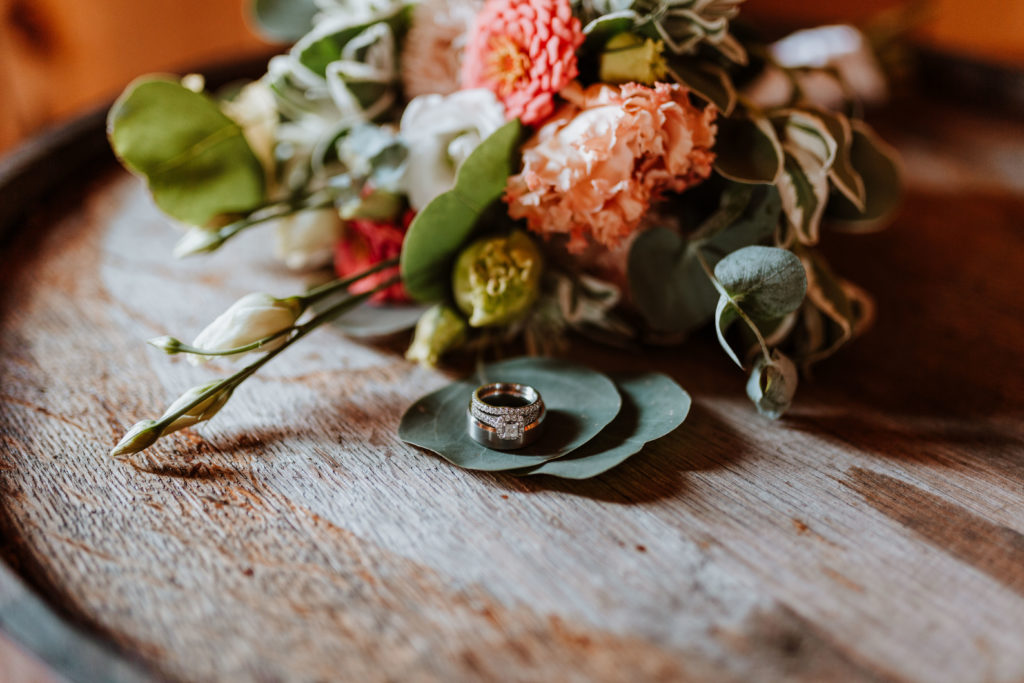
Hopefully some of these tips will work their way into your own wedding and celebration planning process! All steps we take, big or small, that reduce our impact on the environment are so crucial right now. Being conscious of our impact is never a bad thing, and it doesn’t diminish any planned celebration or event!
